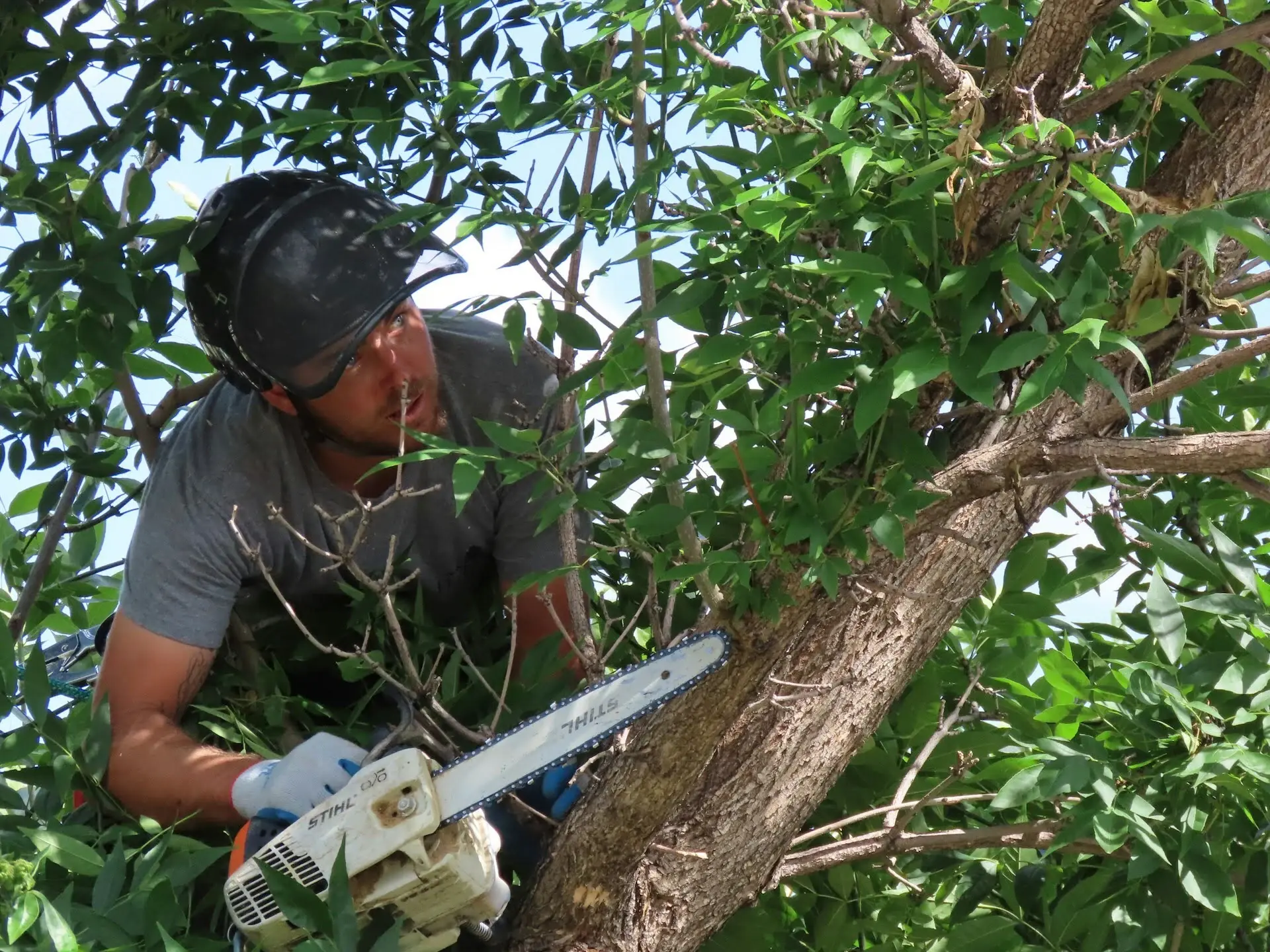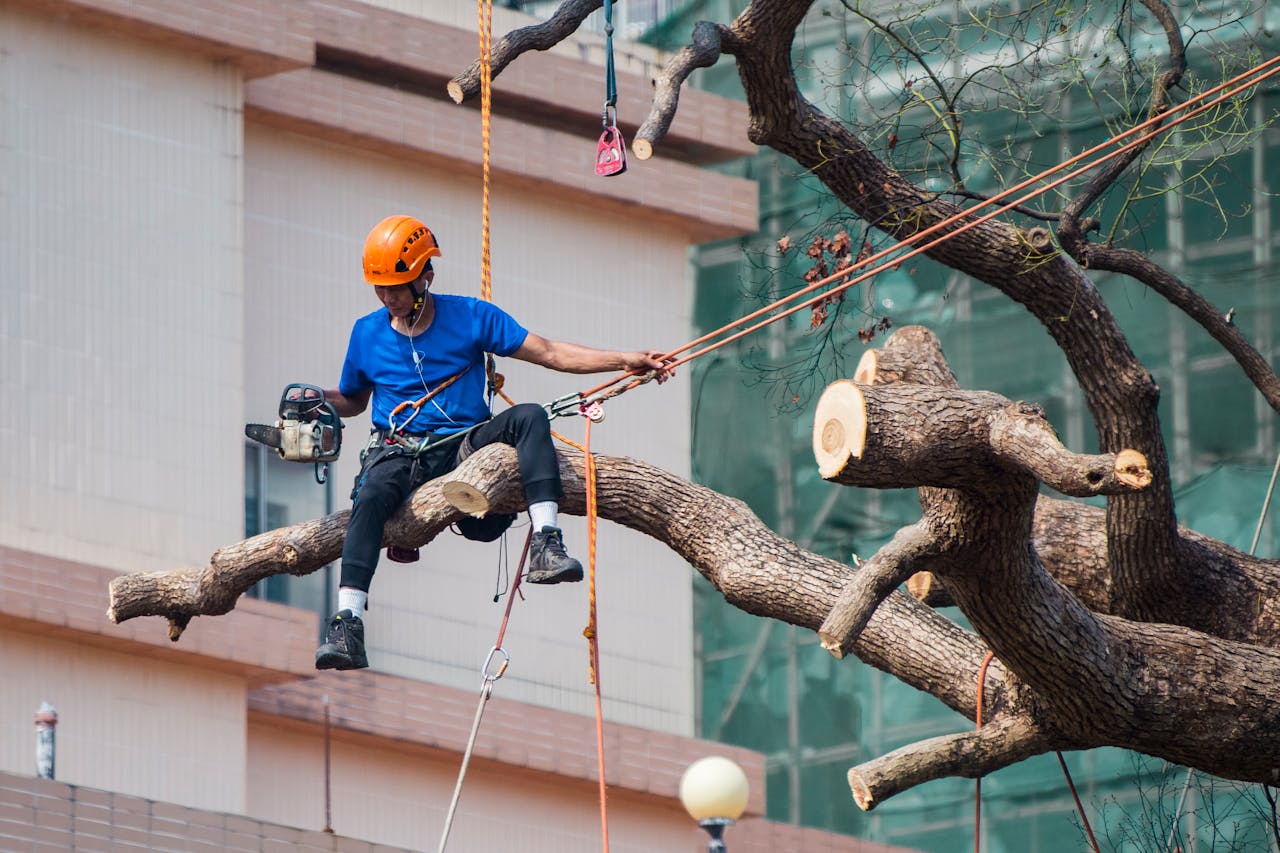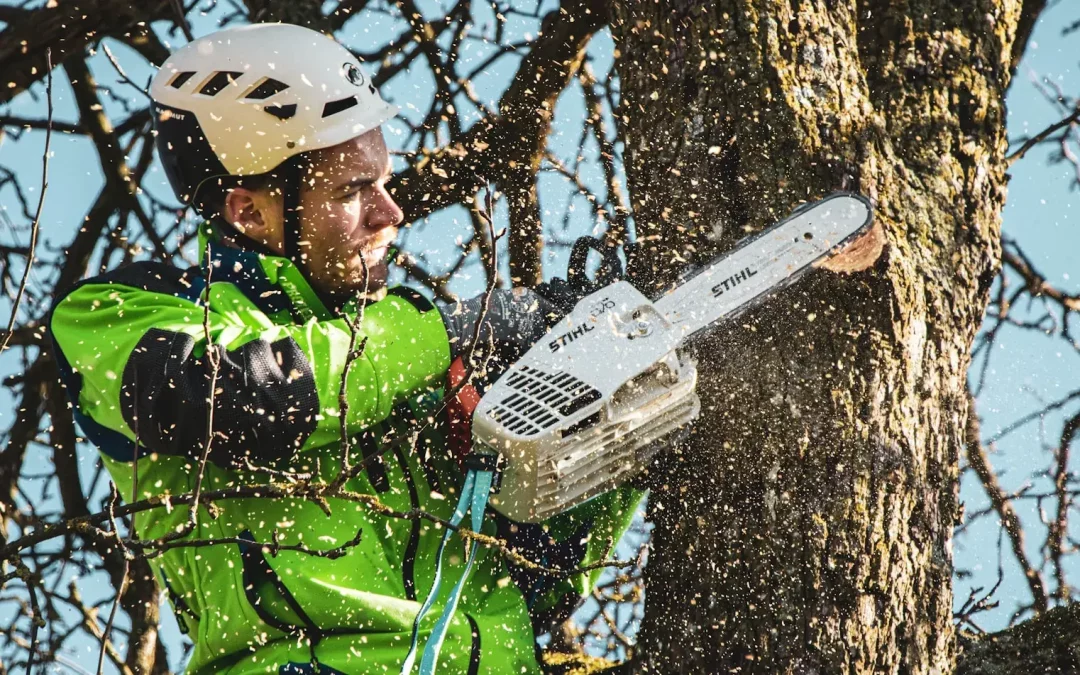Pruning trees serves multifaceted purposes, with safety, health, and aesthetics at the forefront. We at AC Tree Experts advocate for informed pruning practices that not only ensure the well-being of trees but also contribute to the safety and visual harmony of the environment.
We have written this guide to empower property owners with the knowledge needed to nurture strong, healthy trees, and enhance the beauty of their surroundings at the same time.
The Purpose of Pruning Trees

Pruning ornamental and shade trees is done for various reasons, with safety, health, and aesthetics being the primary considerations. Pruning can also stimulate fruit production and enhance the value of timber.
Safety
Safety is often maintained by removing branches that might harm the surrounding area and its residents. We trim those that block views on streets or driveways and remove branches near utility lines.
Health
Removing diseased or insect-infested wood promotes health. The crown is thinned to enhance airflow, decrease certain pest issues, and eliminate branch crossing and rubbing.
We prune trees to enhance their form and character and stimulate flower production. This encompasses various techniques for shaping trees to create visually appealing landscapes.
Types of Tree Pruning

- Crown Thinning – A vital technique in tree pruning that targets the removal of smaller, less robust branches from the upper section of your trees. This creates a more spacious tree canopy and facilitates increased airflow and sunlight to penetrate the lower branches and foliage.
- Dead Pruning – The removal of dead, dying, or diseased branches. Dead branch removal not only eliminates infected limbs but also enhances the visual appeal of your trees and the attractiveness of your property. Removing all dead branches significantly reduces the risk of injury to you and your home.
- Crown Reduction – The ideal solution for large trees that are too tall. This involves cutting small branches connected to larger, heavier ones, which prevents your trees from becoming excessively top-heavy. Crown reduction is particularly important for younger trees, as it encourages them to grow robustly without the burden of excess weight from smaller branches.
- Crown Lifting – involves pruning to eliminate low-hanging branches and limbs that drag down the higher ones. This is typically done for trees that overhang your home, sidewalks, and public roads. This procedure is most suitable for younger trees as it can do a lot of damage to larger, more mature ones.
- Pollarding – Involves removing all branches so that all that remains is a framework of the secondary branches along the main stem. Pollarding begins when your trees are still young and is done at regular intervals during their lifespan. This type of trimming provides a constant supply of small-diameter poles without killing your tree.
Pruning Guidelines by AC Tree Experts and Tree Service

Consider the following guidelines when pruning to promote a strong and healthy tree in your property.
General Guidelines for Tree Pruning
- When pruning trees, prioritize safety, health, and aesthetics.
- Never prune trees close to utility lines. Always consult your local utility company first.
- Avoid pruning in a way that could attract harmful pests.
- When deciding which branches to remove, consider their size:
- Branches under 5 cm in diameter are generally safe to remove.
- Branches between 5 and 10 cm should be considered carefully.
- Branches over 10 cm should only be removed for a good reason.
Guidelines for Crown Thinning
- Begin with an assessment of how the tree will be pruned. Start from the top and work downwards.
- Prioritize branches with strong, U-shaped angles of attachment while removing those with weak, V-shaped angles or included bark.
- Aim for evenly spaced lateral branches along the main stem for young trees.
- Eliminate any branches that rub or cross each other to prevent damage.
- Ensure that lateral branches are kept to no more than one-half to three-quarters of the stem’s diameter to discourage the growth of co-dominant stems.
- It is essential not to remove more than one-quarter of the living crown in a single session; if additional pruning is necessary, spread it out over successive years.
Guidelines for Crown Raising
When raising a crown, ensure that live branches are maintained on at least two-thirds of the tree’s total height to promote the development of a sturdy stem. as the removal of too many lower branches can impede this. Make sure that you eliminate basal sprouts and vigorous epicormic sprouts to encourage healthier growth.
Guidelines for Crown Reduction
Crown reduction pruning is only for situations where it is truly needed. When you make the pruning cut, ensure it is at a lateral branch that is at least one-third the diameter of the stem to be removed. If you find it necessary to remove more than half of the foliage from a branch, it is better to remove the entire branch to maintain the tree’s health and structural integrity.
AC Tree Experts – Tree Services

Property owners can ensure their trees’ longevity and beauty for years by following the guidelines outlined above. However, the best move would still be to employ the services of fully licensed professionals here in Pennsylvania for all your plant health care, tree maintenance, and tree care services.
Our team at AC Tree Experts provides quality tree trimming, tree pruning, and tree removal services here in Chester County, Pennsylvania, and its nearby townships. Our tree services are guaranteed to make your trees healthy and vibrant throughout!




